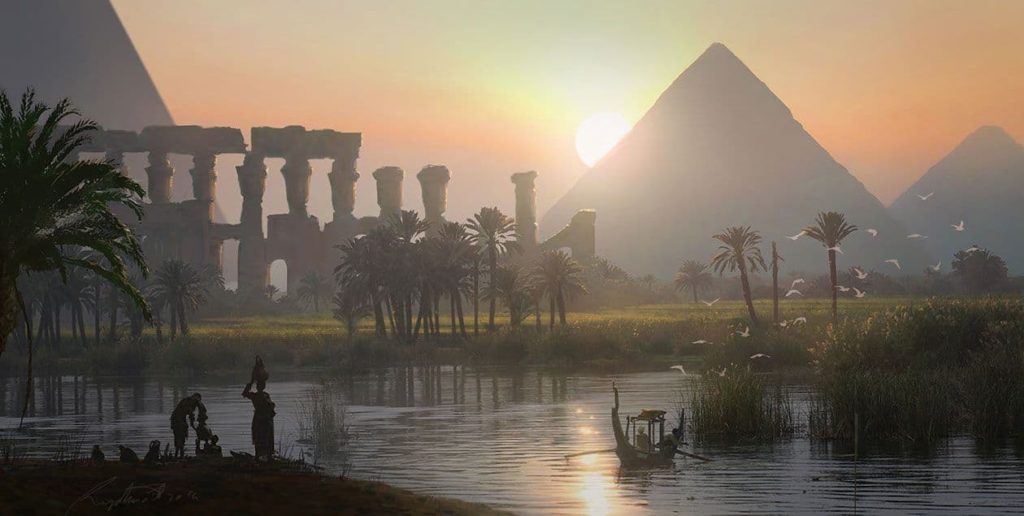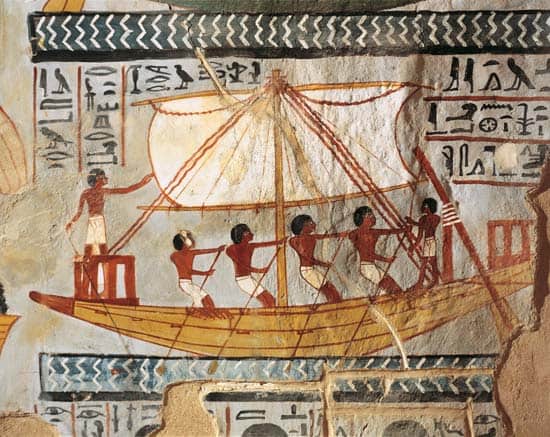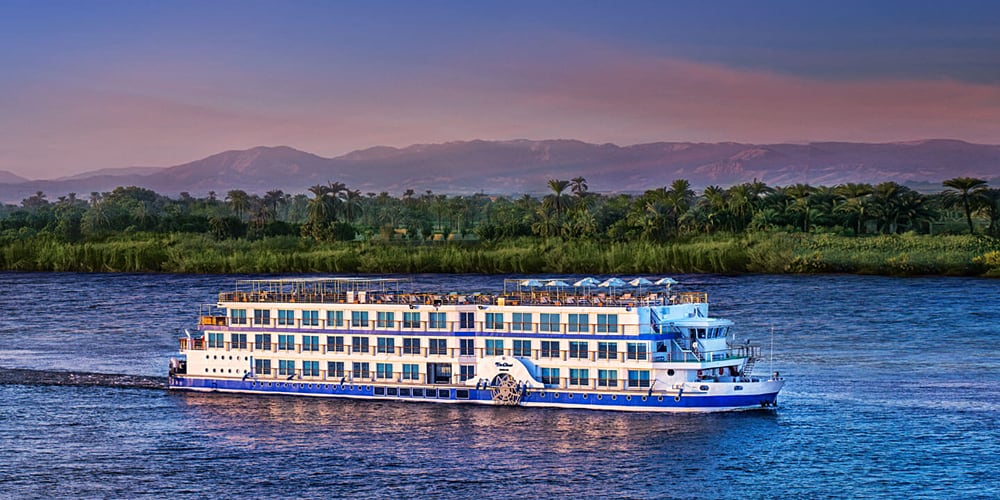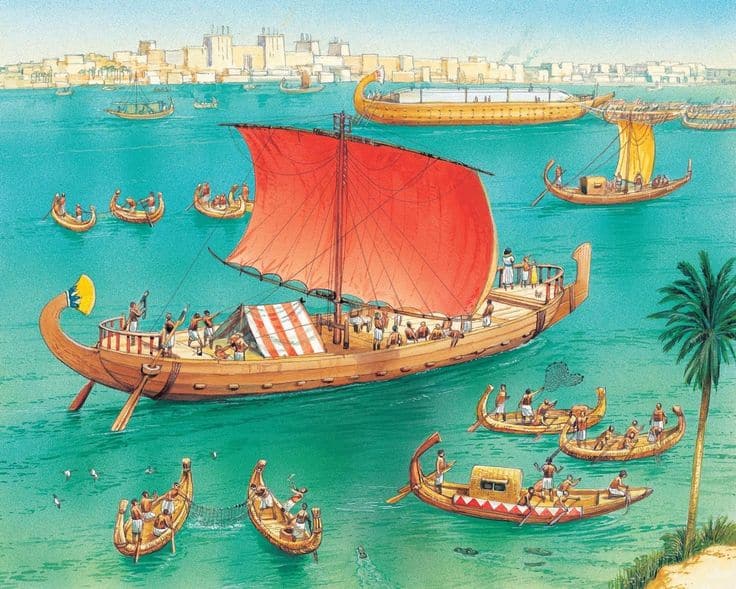The Nile River is the world’s longest river.
Its northern section flows through an almost entirely deserted area, providing fertility and water supply.
Since ancient times, Egypt has relied on the Nile, with most people living along or near the banks of the river.
The Nile is one of the world’s best-known rivers.
It passes through 11 countries, including Kenya, Congo, Sudan, Uganda, and Egypt, situated in North Africa, before ultimately flowing into the Mediterranean Sea.
Since ancient times, Egyptian civilizations have relied on the Nile. The river’s behavior has inspired a lot of stories.
For a better understanding, here are interesting Nile river facts:
7. Disputed Source

The river springs its water from two tributaries: the White Nile, which flows from Lake Victoria (the world’s second-largest freshwater lake), and the Blue Nile, which flows from Lake Tana in Ethiopia (where the Virgin Mary is believed to have rested from Egypt during her journey).
The claims emerged because the river begins in the Lake Victoria region, where many feed rivers join it.
Nevertheless, the Kagera River, the largest of these feeders, is now generally accepted as the Nile’s true source.
6. Role in Pyramids

The Egyptian pyramids have survived because ancient Egyptians made them of granite, the essential central parts.
While the Egyptian pyramids were made primarily of sandstone, the center included the use of granite, a tougher stone.
The granite was 1,000 kilometers south, and Egyptians used the Nile to carry the stone to the construction sites.
Another explanation was that since the pyramids were the pharaohs’ final resting places, it only makes sense that they should live where their souls would start their afterlife journey.
After the sun settled, thanks to this association, to symbolize death as the sun “died” every night in the west.
The pharaoh’s souls connected with the sun setting before rising again in the morning, a symbol of eternal life.
They lived right in the region which metaphorically meant death by putting pyramids west of the Nile.
5. Role in Ancient Egypt

In the history of ancient Egyptians, the Nile played an important role. It’s one of the Nile river facts that because of it, ancient Egyptians live in desert satisfactorily.
It supplied drinking water, an irrigation source for crops, and especially the fertile soil used for cultivation.
Without the Nile, Egyptian cultures would have had trouble surviving.
It also provided the way they transported goods and people.
This led to the development of boats and other methods of water transport.
The most significant, if not the most important, the role played by the Nile River in ancient history.
It was easier and safer to use the Nile River for trade with other countries and civilizations.
Land transport was riskier than ancient Egyptians faced nomadic attacks. It’s been a long ride.
Donkeys were the only means of transport until they added the camel.
During these journeys, the Egyptians also had to carry water. This not only slowed them down but could also risk thirst if they ran out.
The Nile River not only provided a source of water and travel but also provided food for the civilization.
It was here that we discovered the famous Rosetta Stone, its inscriptions that allow the modern people to understand the Egyptian hieroglyphs.
4. Home to Largest crocodiles

The Nile crocodile, which lives in 26 countries, is a massive crocodile native to African freshwater habitats.
Four of them in the nation’s swamps since 2000 are deadly than native alligators or crocodiles, scientists have said.
The Nile River crocodile is the biggest living crocodile species in the world, with a length of up to 20 feet and a length of up to six meters.
In its native Africa, it has a reputation as a man-eater and statistics support that.
In fact, wildlife researchers consider Nile crocodiles much more aggressive than American crocodiles or alligators.
3. Biggest transportation

The Nile River has been used for thousands of years to carry people and goods, even before the ancient Egyptian era.
Today, it is a draw both for local people and for visitors It is the most important travel routes.
It was virtually unknown to travel long distances on land until the 19th century and the arrival of the steam engine.
The mighty Nile river allowed people and goods to travel long and short distances.
The river is a major transport source particularly true during the flooding where travel by road is not available in many places along the river.
2. Noone has really successfull traveilling it

Before 2004, no one had traveled all across the Nile.
Two adventurers had to travel for four months to complete the challenge.
Pasquale Scaturro, one explorer, said that the Nile was nothing like he expected to be slow and lazy.
“It’s got fast waterfalls, jungles, canyons, deserts, hippos, crocs, lovely long plains, great sandbars,” he said.
The expedition began on Christmas Day 2003 at Source of the Rivers, legendary Springs of Sakala in the Ethiopian Mountains, known as the Little Blue Nile (the Little Blue Nile).
“There’s no river in the world to match the Nile.”
The team rafted around 3,250 miles through Ethiopia’s whitewater gorges, through the Sudanese desert plains that flow into the Nile Blue and White Nile Rivers and eventually through Egypt’s highly populated towns — where river traffic, dirty wastewater, and untreated water faced an entirely different obstacle.
1. It is now eroding

Alexandria, Port Said, and other towns and villages exist along the coastal area of the delta of the Nile.
It represents the country’s largest manufacturing, agricultural and economic resources.
The area has endured massive and overly unplanned infrastructure projects to improve the local communities’ economic status, but that has harmed both their land use and environment.
Scientists have analyzed satellite images to spatially evaluate and measure the rate of change of dominant land-use/cover classes (from 1990 to 2014) and GIS techniques.
The Nile Delta coast is being dramatically changed, primarily by man-made developments that lead to social or economic patterns and to current local market trends and population preferences or both.
The Delta region is experiencing significant changes.
Such changes are definitely having a huge impact not only on the geographical distribution of existing landforms but are also causing major shifts in the Nile Delta coastal ecology such as aquatic intrusion, coastline degradation, alteration, conversion and/or dispersion of some natural ecosystems that occur in the area of study.
These developments undoubtedly have dramatic effects on the coastal delta of the Nile.
It may be vital to establish new policies for the adaptation of migration as a good policy that would help restore and balance all the Nile Delta environmental ecosystems and similar environments.
These were Nile river facts please share this post with your friends on social media to create an awareness to save the long river in the world.

